Mal wieder was aus der heimischen Hexenküche - und erneut ein Modell, das tatsächlich unter "Science Fiction" fällt, denn das Flugzeug, die English Electric P.6/1, hat es als Projekt tatsächlich gegeben. Was wäre also gewesen, wenn...?

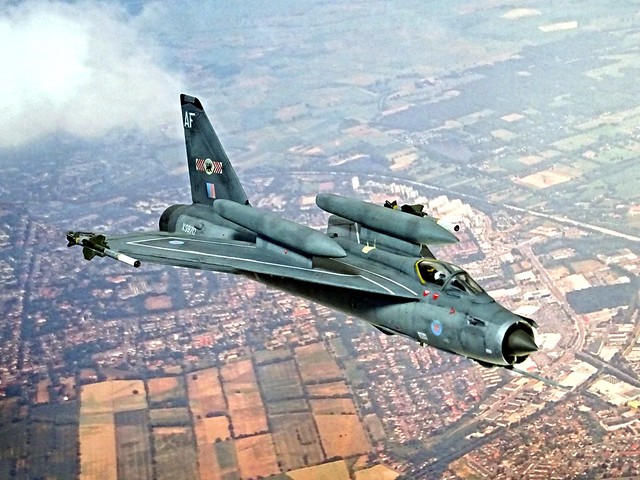
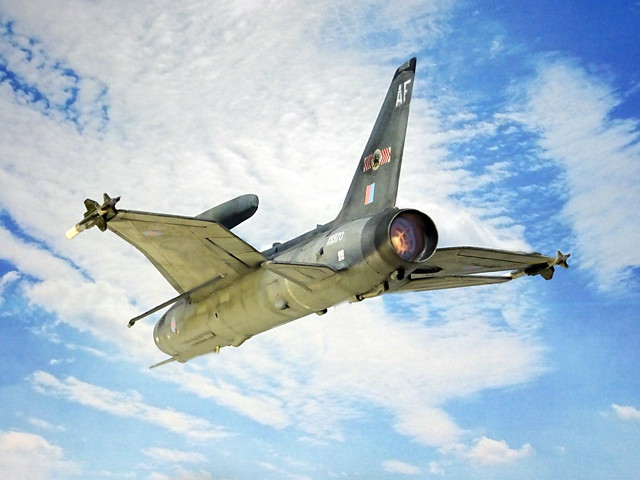

Some background:Although the performance increases of jet-powered aircraft introduced towards the end of World War II over their piston-powered ancestors were breathtaking, there were those at the time who believed that much more was possible. As far back as 1943, the British Ministry of Aircraft Production had issued a specification designated "E.24/43" for a supersonic experimental jet aircraft that would be able to achieve 1,600 KPH (1,000 MPH).
Beginning in 1946, a design team at English Electric (EE) under W.E.W. "Teddy" Petter began design studies for a supersonic fighter, leading to award of a Ministry of Supply (MoS) contract in 1947 under specification "ER.103" for a design study on an experimental aircraft that could achieve Mach 1.2.
The MoS liked the EE concepts, and in early 1949 awarded the company a contract under specification "F.23/49" for two flying prototypes and one ground-test prototype of the "P.1".



The P.1 was defined as a supersonic research aircraft, though the design had provisions for armament and a radar gunsight. It incorporate advanced and unusual design features, such as twin turbojet engines mounted one above the other to reduce aircraft frontal area; and strongly swept wings, with the wingtip edges at a right angle to the fuselage, giving a wing configuration like that of a delta wing with the rear inner corners cut out. The aircraft featured an elliptical intake in the nose.
The P.1's performance was so outstanding that the decision was quickly made to proceed on an operational version that would be capable of Mach 2. In fact, the second P.1 prototype featured items such as a bulged belly tank and fit of twin Aden Mark 4 30 millimeter revolver-type cannon, bringing it closer to operational specification.
Orders were placed for three "P.1B" prototypes for a production interceptor and the original P.1 was retroactively designated "P.1A". The P.1B featured twin Rolls-Royce Avon afterburning engines and a larger tailfin. An airborne intercept (AI) radar was carried in the air intake shock cone, which was changed from elliptical to circular. The cockpit was raised for a better field of view and the P.1B was armed with two Aden cannon in the upper nose, plus a pack under the cockpit that could either support two De Havilland Blue Jay (later Firestreak) heat-seeking AAMs or 44 Microcell 5 centimeter (2 inch) unguided rockets.

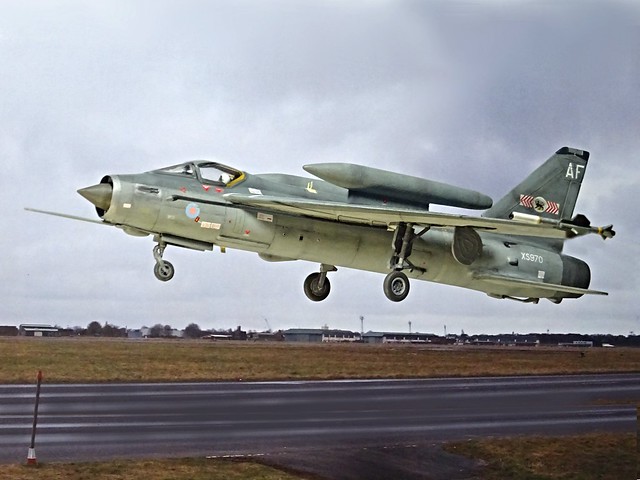
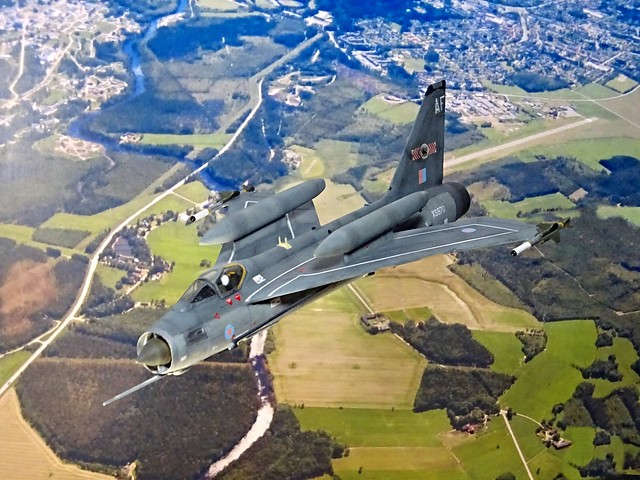
The initial P.1B prototype performed its first flight on 4 April 1957 and the type entered RAF service as EE Lightning F.1. RAF Number 74 Squadron at Coltishall was the first full service unit, with the pilots acquiring familiarization with the type during late 1960 and the squadron declared operational in 1961.
However, while the Lightning was developed further into more and more advanced versions. Its concept was also the basis for another research aircraft that would also be developed into a high performance interceptor: the P.6/1, which later became the “Levin” fighter.
P.6 encompassed a total of four different layouts for a Mach 2+ research aircraft, tendering to ER.134T from 1952. P.6/1 was the most conservative design and it relied heavily on existing (and already proven) P.1 Lightning components, primarily the aerodynamic surfaces. The most obvious difference was a new fuselage of circular diameter, housing a single Rolls Royce RB.106 engine.
The RB.106 was a two-shaft design with two axial flow compressors each driven by its own single stage turbine and reheat. It was of similar size to the Rolls-Royce Avon, but it produced about twice the thrust at 21,750 lbf (96.7 kN) in the initial version. The two-shaft layout was relatively advanced for the era; the single-shaft de Havilland Gyron matched it in power terms, while the two-spool Bristol Olympus was much less powerful at the then-current state of development. Apart from being expected to power other British aircraft such as those competing for Operational Requirement F.155, it was also selected to be the powerplant for the Avro Canada CF-105 Arrow and led to the Orenda Iroquois engine, which even reach 30.000 lbf (130 kN).
The P.6/1 was eventually chosen by the MoS for further development because it was regarded as the least risky and costly alternative. Beyond its test bed role for the RB.106 the P.6/1 was also seen as a potential basis for a supersonic strategic air-to-ground missile (similar to the massive Soviet AS-3 ‘Kangaroo’ cruise missile) and the starting point for an operational interceptor that would be less complex than the Lightning, but with a comparable if not improved performance but a better range.



In 1955 English Electric received a go ahead for two P.6/1 research aircraft prototypes. Despite a superficial similarity to the Lightning, the P.6/1’s internal structure was very different. The air duct, for instance, was bifurcated and led around on both sides of the cockpit tub and the front wheel well instead of below it. Further down, the duct ran below the wing main spar and directly fed the RB.106.
The rear fuselage was area-ruled, the main landing gear retracted, just like the Lightning’s, outwards into the wings, while the front wheel retracted backwards into a well that was placed further aft than on the Lightning. The upper fuselage behind the main wings spar carried fuel tanks, more fuel was carried in wing tanks.
Both research machines were ready in 1958 and immediately started with aerodynamic and material tests for the MoS, reaching top speeds of Mach 2.5 and altitudes of 60.000 ft. and more. In parallel, work on the fighter version, now called “Levin”, had started. The airframe was basically the same as the P.6/1’s. Biggest visible changes were a wider air intake with a bigger central shock cone (primarily for a radar dish), a shorter afterburner section and an enlarged fin with area increased by 15% that had become necessary in order to compensate instability through the new nose layout and the potential carriage of external ordnance, esp. under the fuselage. This bigger fin was taken over to the Lightning F.3 that also initially suffered from longitudal instability due to the new Red Top missiles.
The Levin carried armament and avionics similar to the Lightning, including the Ferranti-developed AI.23 monopulse radar. The aircraft was to be fully integrated into a new automatic intercept system developed by Ferranti, Elliot, and BAC. It would have turned the fighters into something like a "manned missile" and greatly simplified intercepts.
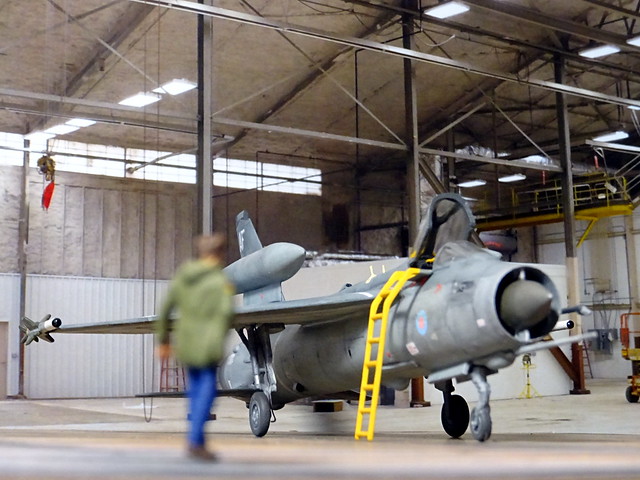

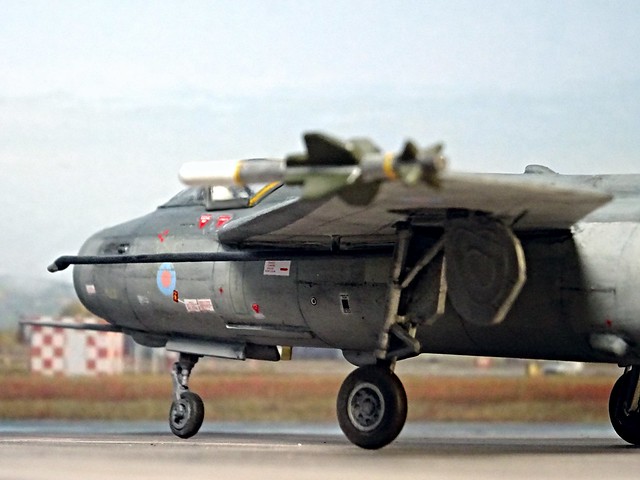
Anyway, the Levin’s weapon arrangement was slightly different from the Lightning: the Levin’s armament comprised theoretically a mix of up to four 30mm Aden cannons and/or up to four of the new Red Top AAMs, or alternatively the older Firestreak. The guns were mounted in the upper nose flanks (similar to the early Lightning arrangement, but set further back), right under the cockpit hatch, while a pair of AAMs was carried on wing tip launch rails. Two more AAMs could be carried on pylons under the lower front fuselage, similar to the Lightning’s standard configuration, even though there was no interchangeable module. Since this four-missile arrangement would not allow any cannon to be carried anymore and caused excessive drag, the typical payload was limited to two Aden cannons and the single pair of wing-tip missiles.
Despite its proven Lightning ancestry, the development of the Levin went through various troubles. While the RB.106 worked fine in the research P.6/1, it took until 1962 that a fully reliable variant for the interceptor could be cleared for service. Meanwhile the Lightning had already evolved into the F.3 variant and political discussions circled around the end of manned military aircraft. To make matters even worse, the RAF refused to buy the completely automatic intercept system, despite the fact that it had been fully engineered at a cost of 1.4 million pounds and trialed in one of the P.1Bs.
Eventually, the Levin F.1 finally entered service in 1964, together with the Lightning F.3. While the Lightning was rather seen as a point defense interceptor, due to the type’s limited range: If a Lightning F.3 missed its target on its first pass, it almost never had enough fuel to make a second attempt without topping off from a tanker, which would give an intruder plenty of time to get to its target and then depart… The Lightning’s flight endurance was less than 2 hours (in the F.2A, other variants even less), and it was hoped that the Levin had more potential through a longer range. Anyway, in service, the Levin’s range in clean configuration was only about 8% better than the Lightning’s. The Levin F.1’s flight endurance was about 2 ½ hours – an improvement, but not as substantial as expected.
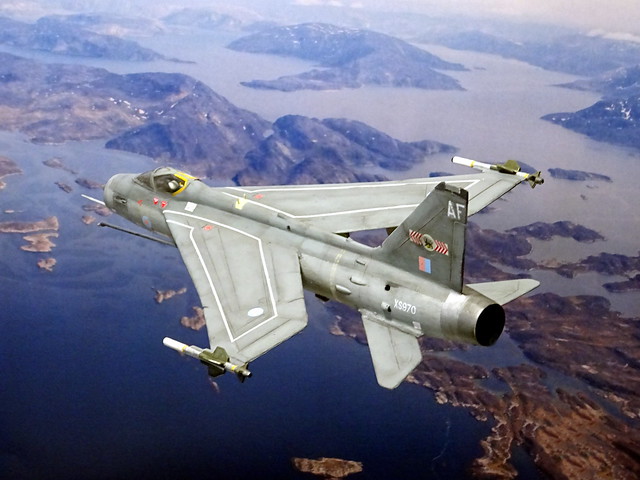


In order to improve the range on both fighters, English Electric developed a new, stiffened wing for the carriage of a pair of jettisonable overwing ferry tanks with a capacity of 1,182 liters (312 US gallons / 260 Imperial gallons, so-called “Overburgers”). The new wing also featured a kinked leading edge, providing better low-speed handling. From mid 1965 onwards, all Levins were directly produced in this F.2 standard, and during regular overhauls the simpler F.1 machines were successively updated. The Lightning introduced the kinked wing with the F.3A variant and it was later introduced with the F.2A and F.6A variants.
Levin production comprised 21 original F.1 airframes, plus 34 F.2 fighters, and production was stopped in 1967. A trainer version was not produced, the Lightning trainers were deemed sufficient for conversion since the Levin and the Lightning shared similar handling characteristics.
The Levin served only with RAF 29 and 65 Squadron, the latter re-instated in 1970 as a dedicated fighter squadron. When in November 1984 the Tornado squadrons began to form, the Levin was gradually phased out and replaced until April 1987 by the Tornado F.3.
General characteristics: Crew: 1
Length w/o pitot: 51 ft 5 in (15,70 m), 55 ft 8 in (16.99 m) overall
Wingspan incl. wingtip launch rails: 34 ft 9 in (10.54 m)
Height: 19 ft 7 in (5.97 m)
Wing area: 474.5 ft² (44.08 m²)
Empty weight: 8937 kg (lb)
Loaded weight: 13,570 kg (29,915)
Max. takeoff weight: 15,210 kg (33,530 lb)
Powerplant: 1× Rolls-Royce RB.106-10S afterburning turbojet,
rated at 20,000 lbf (89 kN) dry and 26,000 lbf (116 kN) with afterburning
Performance: Maximum speed:
- 1,150 km/h (620 kn, 715 mph, Mach 0.94) at sea level
- 2,230 km/h (1.202 kn, 1,386 mph, Mach 2.1;), clean with 2× Red Top AAMs at high altitude
- Mach 2.4 absolute top speed in clean configuration at 50.000 ft.
Range: 1,650 km (890 nmi, 1,025 mi) on internal fuel
Combat radius: 500 km (312 mi); clean, with a pair of wing tip Red Top AAMs
Ferry range: 1,270 mi (1.100 NM/ 2.040 km) with overwing tanks
Service ceiling: 16,760 m (55,000 ft)
Rate of climb: 136.7 m/s (27,000 ft/min)
Wing loading: 76 lb/ft² (370 kg/m²)
Thrust/weight: 0.78
Takeoff roll: 950 m (3,120 ft)
Landing roll: 700 m (2,300 ft)
Armament: 2× 30 mm (1.18 in) ADEN cannons with 120 RPG in the upper front fuselage
2× wing tip hardpoints for mounting air-to-air missiles (2 Red Top of Firestreak AAMs)
2× overwing pylon stations for 260 gal ferry tanks
Optional, but rarely used: 2× hardpoints under the front fuselage for mounting air-to-air missiles (2 Red Top of Firestreak AAMs)